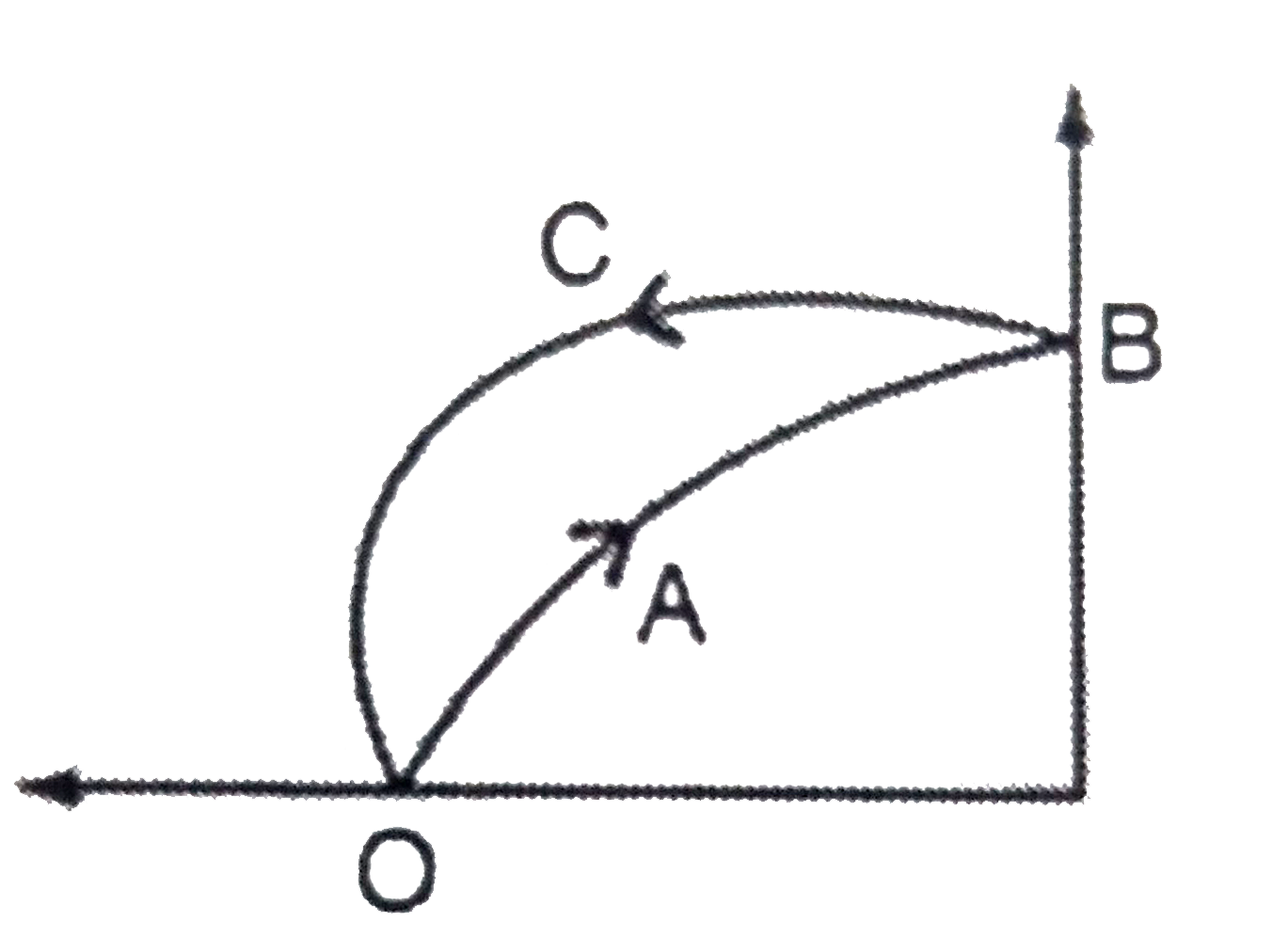A ball is projected from a high tower with speed 20 m/s at an angle 30∘ with horizontal x-axis. The x-coordinate of the ball at the instant when the velocity of the ball becomes perpendicular to the velocity of projection will be (take point of projection as origin):
40√3 m
40 m
20√3 m
20 m
The correct Answer is:A
To solve the problem step by step, we will analyze the motion of the ball projected from a tower. The key points to consider are the initial velocity components, the equations of motion, and the condition for the velocity vector to be perpendicular to the initial velocity vector.
Step 1: Determine the initial velocity components
The ball is projected with a speed of 20 m/s at an angle of 30 degrees with the horizontal. We can break this initial velocity into its horizontal (Ux) and vertical (Uy) components using trigonometric functions.
- Ux=U⋅cos(θ)=20⋅cos(30∘)=20⋅√32=10√3m/s
- Uy=U⋅sin(θ)=20⋅sin(30∘)=20⋅12=10m/s
Step 2: Write the equations of motion
Since there is no horizontal acceleration (Ax = 0) and the vertical acceleration is due to gravity (Ay = -g), we can write the equations of motion for the x and y coordinates.
- Horizontal motion: x(t)=Ux⋅t=10√3⋅t
- Vertical motion: y(t)=Uy⋅t−12gt2=10t−12gt2
Step 3: Determine the velocity components
The velocity components at any time t can be expressed as:
- Vx=Ux=10√3m/s (constant)
- Vy=Uy−g⋅t=10−g⋅t
Step 4: Condition for perpendicularity
The velocity vector becomes perpendicular to the initial velocity vector when their dot product is zero:
→V⋅→U=0
Substituting the components:
(10√3)⋅(10√3)+(10−g⋅t)⋅10=0
This simplifies to:
300+100−10g⋅t=0
400=10g⋅t
t=40010g=40g
Step 5: Calculate the time when the velocity is perpendicular
Using g≈10m/s2:
t=4010=4s
Step 6: Calculate the x-coordinate at this time
Now we can find the x-coordinate when t=4s:
x(4)=Ux⋅t=10√3⋅4=40√3m
Final Answer
The x-coordinate of the ball at the instant when the velocity of the ball becomes perpendicular to the velocity of projection is 40√3m.
---
The ball is projected with a speed of 20 m/s at an angle of 30 degrees with the horizontal. We can break this initial velocity into its horizontal (Ux) and vertical (Uy) components using trigonometric functions.
- Uy=U⋅sin(θ)=20⋅sin(30∘)=20⋅12=10m/s
Since there is no horizontal acceleration (Ax = 0) and the vertical acceleration is due to gravity (Ay = -g), we can write the equations of motion for the x and y coordinates.
- Vertical motion: y(t)=Uy⋅t−12gt2=10t−12gt2
The velocity components at any time t can be expressed as:
- Vy=Uy−g⋅t=10−g⋅t
The velocity vector becomes perpendicular to the initial velocity vector when their dot product is zero:
Using g≈10m/s2:
Now we can find the x-coordinate when t=4s:
The x-coordinate of the ball at the instant when the velocity of the ball becomes perpendicular to the velocity of projection is 40√3m.
Similar Questions
A ball is projected from a point on the floor wilth a speed of 15 m/s at an angle of 600 with the horizontal. Will ilt hit a vertical wall 5 m away from the point of projection and perpendiculaer to the plane of projection without and perpendicular to the plane of projection without hitting the floor? will the answer differ if the wall is 22 m away?
View SolutionA ball is projected from ground with a speed of 20ms−1 at an angle of 45∘ with horizontal.There is a wall of 25m height at a distance of 10m from the projection point. The ball will hit the wall at a height of
View Solution
Knowledge Check
- Question 1 - Select One
A particle is projected with velocity 20ms−1 at angle 60∘ with horizontal . The radius of curvature of trajectory , at the instant when velocity of projectile become perpendicular to velocity of projection is , (g=10ms−1)
A60√3mB80√3mC40√3mD803√3m - Question 2 - Select One
A particle is projected with a velocity of 25m/s at an angle of 30∘ with the horizontal . Calculate
(i) The maximum height ,
(ii) time of flight and
(iii) horizontal range .A562 mB286 mC188 mD1130 m - Question 3 - Select One or More
A ball is projected vertically up with speed 20 m/s. Take g=10m/s2
AIt covers a distance of 5 m in 2nd second of its motionBThe displacement in 2nd and 3rd second are equalCThe distance covered in 2nd and 3rd second are equalDThe average speed for first 4 seconds is zero
A ball projected from the ground with speed 10m/s at an angle of 45∘ with horizontal. It collides with a wall at a distance 2 m from the point of projection and returns to its original position. If the coefficient of restitution between the ball and wall is 1/x, find x.
 View Solution
View SolutionA ball is projected from a point in a horizontal plane with a velocity of 20 m/s at 30∘ with the horizontal. Coefficient of restitution is 0.8, then
View SolutionA ball is projected horizontally. After 3s from projection its velocity becomes 1.25 times of the velocity of projection. Its velocity of projection is
View SolutionA ball is projected form top of a tower with a velocity of 5m/s at an angle of 53∘ to horizontal. Its speed when it is at a height of 0.45m from the point of projection is:
View SolutionA ball is projected with 20√2m/s at angle 45∘ with horizontal.The angular velocity of the particle at highest point of its journey about point of projection is
View Solution

